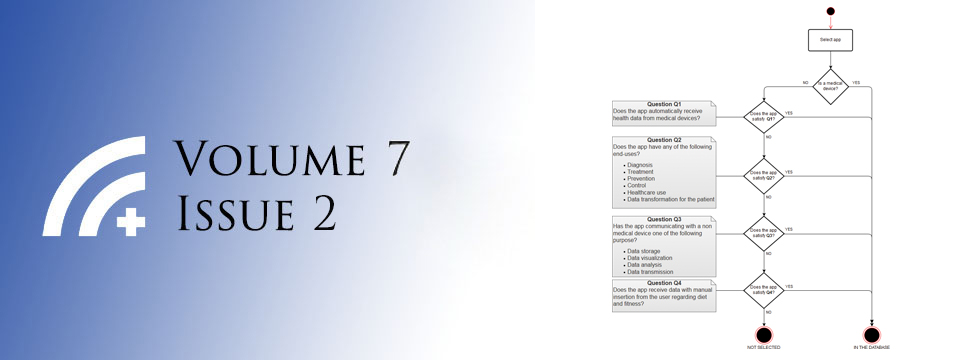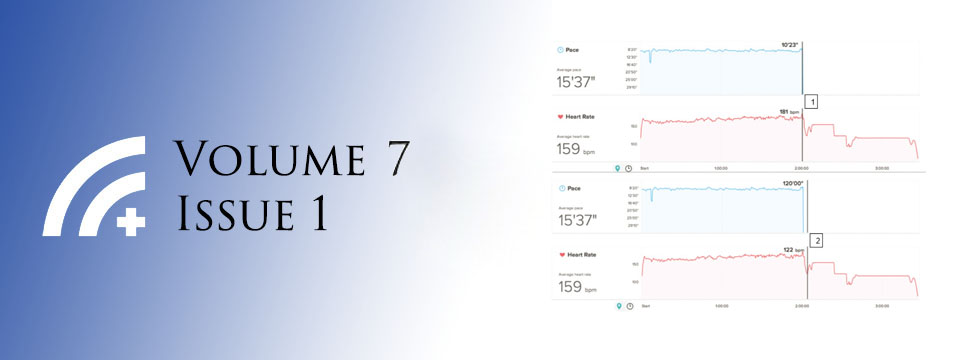Posted on Apr 21, 2017 in Perspective Pieces |
Perspectives Piece: Realizing the Potential for Digital Health Technology in Behavioral Medicine
Brandon S. Aylward, Ph.D.1, Timothy D. Nelson, Ph.D.2, Kevin A. Hommel, Ph.D.3
1Emory University School of Medicine, Department of Pediatrics, Atlanta, GA; 2University of Nebraska-Lincoln, Department of Psychology, Lincoln, NE; 3Cincinnati Children’s Hospital Medical Center, Division of Behavioral Medicine and Clinical Psychology, Cincinnati, OH
Corresponding Author: baylwar@emory.edu
Journal MTM 6:1:46–48, 2017
doi:10.7309/jmtm.6.1.7
Posted on Apr 21, 2017 in Perspective Pieces |
“The BUS Framework: A comprehensive tool in creating an mHealth App utilizing Behavior Change Theories, User-Centered Design, and Social Marketing”
Sajani Patel1, Monisha Arya2,3,4
1School of Social Sciences, Rice University, Houston, Texas; 2Department of Medicine Section of Infectious Diseases, Baylor College of Medicine, Houston, TX; 3Department of Medicine Section of Health Services Research, Baylor College of Medicine, Houston, Texas; 4Center for Innovations in Quality, Effectiveness and Safety (IQuESt), Michael E. DeBakey VA Medical Center, Houston, Texas
Corresponding Author: sajani.patel@alumni.rice.edu
Journal MTM 6:1:39–45, 2017
doi:10.7309/jmtm.6.1.6
Posted on Apr 21, 2017 in Perspective Pieces |
mHealth: Vehicle for Health System Strengthening in Sri Lanka
Dr. Madapathage Gayan Buddhika Senanayake, MBBS, MD1, Dr. Gunasena Sunil Senanayake, MBBS, MD2
1Junior Public Health Professional – Health System Management, Department of Health System Development, South East Asian Regional Office for World Health Organization, New Delhi, India; 2Regional Advisor – Health System Management and Patient Safety, Department of Health System Development, South East Asian Regional Office for World Health Organization, New Delhi, India
Corresponding Author: buddhikaoffice@gmail.com
Journal MTM 6:1:34–38, 2017
doi:10.7309/jmtm.6.1.5
Sri Lanka has a unique primary healthcare system with diverse community based healthcare services. Emerging health challengers in sustainable development era needs to be addressed with special emphasis on universal health coverage.
mHealth technology is an evidence based intervention to cater the novel healthcare priorities. mHealth needs to be integrated into the existing health system functions, rather stand-alone resolutions. mHealth applications are used for behaviour change communication, point-of-care diagnosis, vital event registration, data collection, electronic health records, provider-to-provider communication, human resource management and supply chain management initiatives. Incorporating these mHealth interventions at community level are essential in resolving future health challengers in Sri Lanka.
Posted on Apr 21, 2017 in Original Article |
Preliminary Validation Study of Consumer-level Activity Monitors and Mobile Applications for Step Counting under Free Living Conditions
Manolis Adamakis, MSc, PhD candidate
Faculty of Physical Education and Sport Science, National and Kapodistrian University of Athens, Athens, Greece
Corresponding Author: manosadam@phed.uoa.gr
Journal MTM 6:1:26–33, 2017
doi:10.7309/jmtm.6.1.4
Background: The last decade’s technological advances have spurred a continuously increasing interest in objective monitoring of physical activity with the use of wearable devices. Even though an increased accuracy is important in some lines of research, a balance between precision, feasibility and low-cost monitoring technologies is clearly needed.
Aims: The purpose of this study was to compare the accuracy for step counting between one spring-levered pedometer, two piezo-electric pedometers and two free of charge pedometer applications for Android smartphones, under free-living conditions.
Methods: Eleven healthy adults, ranging in BMI from 20.20 to 24.77 kg*m−2, volunteered to participate in the study. They wore the selected criterion pedometer Yamax SW-200 (SW), which is considered the “gold standard”, the Garmin Vivofit (GV), Medisana ViFit (MV), Accupedo application (AC) and Pedometer 2.0 application (PD), for a 24-h period, under free-living settings. Data were analyzed using descriptive and inferential statistics.
Results: All devices and applications demonstrated strong correlations with the SW reference pedometer (IC = 0.86 – 0.94), but often large mean differences Significant differences were observed among the five pedometers (F = 5.21, p = 0.01). Only the PD counted almost similar steps as the SW (F = 0.57, p = 0.47), even though it had high Mean Absolute Percent Error (MAPE). The 3 remaining pedometers significantly overestimated counted steps, with the AC application been the least accurate [F = 11.92, p < 0.01; MAPE = 36.15%].
Conclusions: The results of the present study showed favorable outcomes for the estimation of steps per day for the PD application in healthy and normal weight people. The two piezo-electric pedometers (GV – MV) appeared to give similar values, however these values constantly overestimated step counting compared with the criterion pedometer. Taking into account the free cost and feasibility of the PD application, the results demonstrate good potential for future use in free-living settings.
Posted on Apr 21, 2017 in Original Article |
Development and Feasibility of a Tablet-based Self-monitoring and Management System in Pregnant Women
Hiroshi Kobayashi, MD, PhD1, Yuno Osanai2, Toshiyuki Sado, MD, PhD1, Katsuhiko Naruse, MD, PhD1, Michiyuki Horiguchi3
1Department of Obstetrics and Gynecology, Nara Medical University, Nara, Japan; 2ShinIng. Inc., Otaru, Japan; 3Rastec, Co. Ltd., Nara, Japan
Corresponding Author: hirokoba@naramed-u.ac.jp
Journal MTM 6:1:19–25, 2017
doi:10.7309/jmtm.6.1.3
Objectives: Many health telemedicine applications (apps) have been released in the clinical-care setting. There is limited information regarding the utility of ICT-based maternity data collection and a comprehensive home-based model of care for high risk pregnant women. The aim of our study was to assess the feasibility of a tablet-based real-time bidirectional telecommunication of self-reported maternal condition in normal and high risk pregnant women.
Methods: The study included eighteen pregnant women (13 normal pregnant women [the Cohort 1 study] and 5 high risk pregnant women [the Cohort 2 study]) who expressed their interest in participating in the study. Participants were supplied with a tablet computer installed with the “MaternityCare” service program. Each user recorded physical information (body weight and blood pressure) and answered the multiple questions on obstetrical symptoms daily for 30 days.
Results: The median value of individual compliance with practice (individual patient-level reporting rates) was 76.7% in the Cohort 1 study and 100% in the Cohort 2 study. Self-reporting data were transmitted on 65.8% for the Cohort 1 study, and 218.9% for the Cohort 2 study of subject days (subject day =1 subject × 1 day). 66.7% (10/15) of participants affirmed applications’ ease of use, and 60% (9/15) desired to implement the app into practice after the study.
Discussion: In conclusion, high risk pregnant women had a positive attitude about home-based self-monitoring and expressed a strong desire to receive this app. A dynamic, real-time, bidirectional and interactive mobile maternity health system with a tablet app may support information sharing, quick consultation and initiation of the prophylaxis and treatment at the patient, pre-hospital healthcare provider and physician levels.
Posted on Apr 21, 2017 in Original Article |
Meta-analysis of Mobile Phone Reminders on HIV Patients’ Retention to Care
SoSon Jong, RN, PhD1, Yvette Cuca, PhD1, Lisa M. Thompson, FNP, PhD2
1School of Nursing, University of California, San Francisco; 2School of Nursing, Global Health Sciences, University of California, San Francisco
Corresponding Author: soson.jong@ucsf.edu
Journal MTM 6:1:5–18, 2017
doi:10.7309/jmtm.6.1.2
Aims: This research aims to systematically review the current clinical evidence of the efficacy of mobile phone reminders on retention to care among HIV patients. This study also seeks to determine an effect size of the intervention and presents implications for future studies.
Background: Use of mobile technologies is an innovative and affordable approach to HIV prevention and care, particularly in resource limited settings. Approximately two-thirds of people who are initially diagnosed with HIV are lost to follow-up before starting HIV treatment in low and middle-income countries, posing serious global health concerns. While mobile text message reminders for HIV medication adherence have shown positive health outcomes, it is not well understood whether the reminders can also improve patients’ retention to care.
Methods: The authors conducted a meta-analysis of literature in the following databases: PubMed, CINAHL, ProQuest, and Web of Science. Of the 667 peer-reviewed research articles reviewed, nine studies were included in the final analysis. Stata version 13 was used for the analysis.
Results: Nine studies (5 randomized controlled and 4 before and after studies) from 7 countries included 3,004 HIV patients. Random-effect meta-analysis (I-squared=94.1%) found that HIV patients who received mobile phone reminders for their follow-up appointments were two times more likely to return to care than those who didn’t receive reminders (pooled odd ratio (OR)=2.04, 95% CI: 0.97–4.27). Our sub-group analysis of 5 randomized controlled studies showed a significant effect of mobile phone reminders (OR=2.04, 95% CI: 1.11–3.74). Six studies in Africa showed that HIV patients (mostly women) receiving mobile phone reminders were three times more likely to return to care than those who received no reminders (OR=2.92, 95% CI: 1.13–7.53).
Conclusion: Mobile phone reminders are an effective intervention to improve retention to HIV care. Women with HIV living in resource limited settings benefit significantly from the intervention. Also, mobile phone reminders using text messages are as effective as phone calls to improve retention to HIV care.








